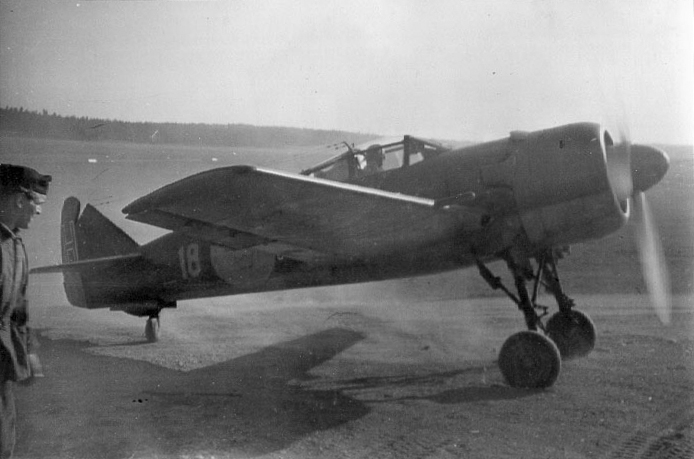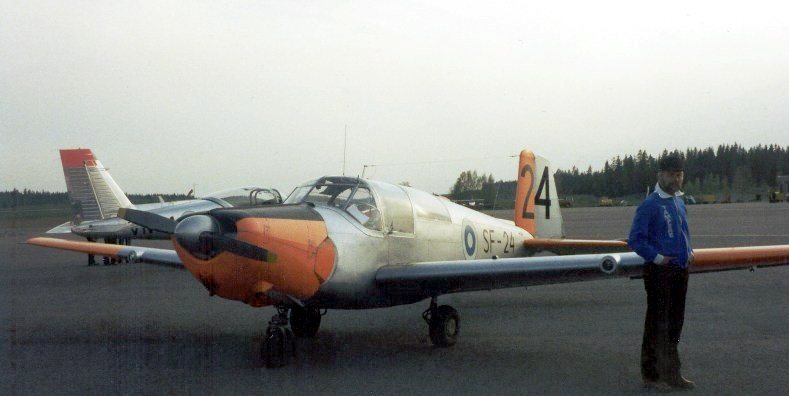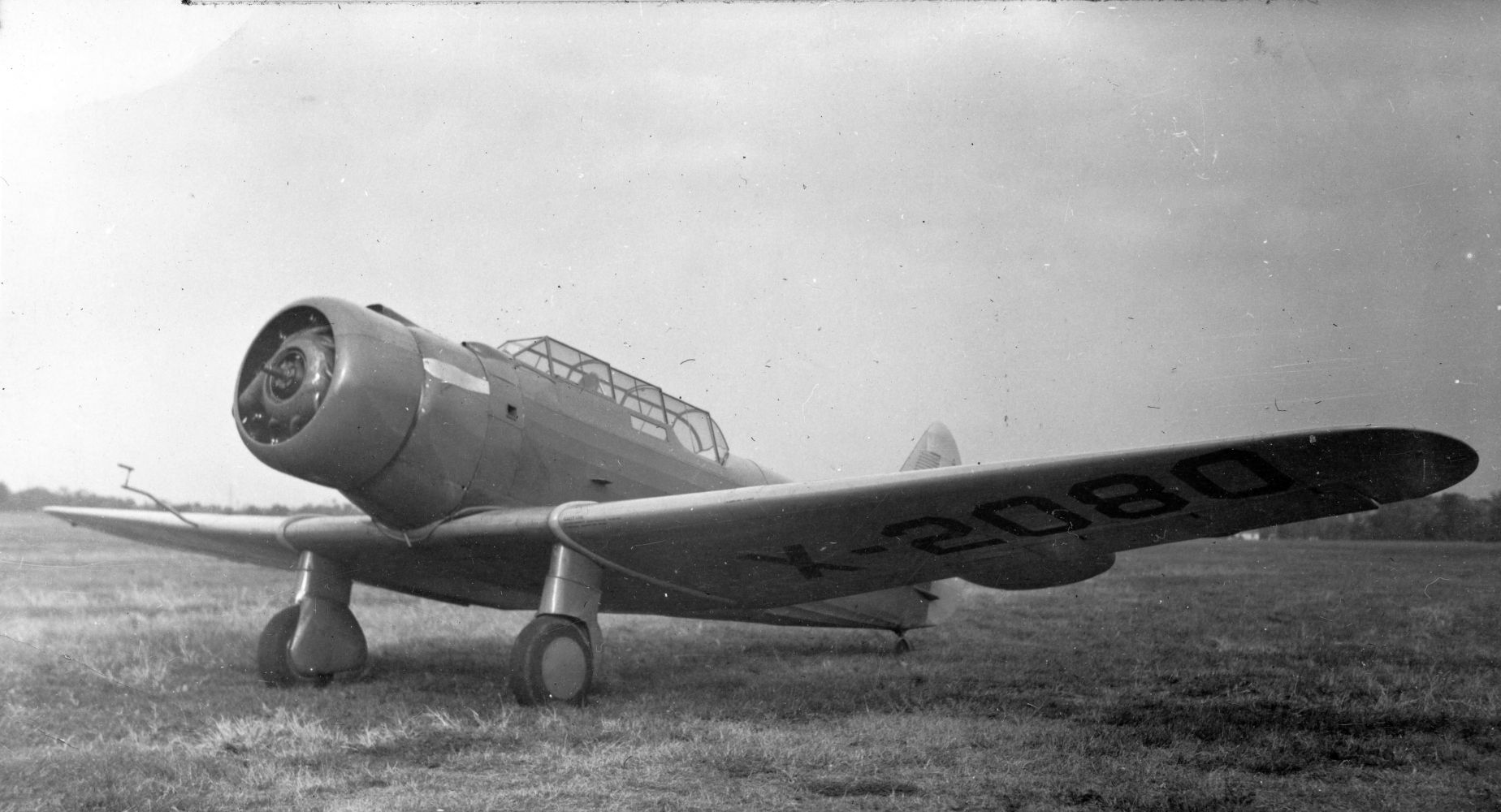|
Göta Wing
Göta Wing ( sv, Göta flygflottilj), also F 9 Säve, or simply F 9, was a Swedish Air Force wing with the main base located near Gothenburg in south-west Sweden. History The decision to set up the air wing was made in 1936 to defend the import/export harbours on the west coast. The wing itself was not commissioned until October 1, 1940 and the airfield took until 1941 to complete. Initially, two squadrons of J 8 fighters were commissioned in 1940, but they were quickly replaced by three squadrons of J 11s. In 1942 hangars and some of the base command were relocated inside large shelters blasted out of the rocks. Initially the shelter area was only 8,000 m² (72,000 sq ft.) but it was later extended to 22,000 m² (200,000 sq ft.) 30 m (100 ft) below ground level. During 1943, the J 11s were replaced by J 22s and subsequently by J 21s in 1946. The J 21s served for only three years until 1949 when they were replaced by the J 28B. After yet only two years the J 2 ... [...More Info...] [...Related Items...] OR: [Wikipedia] [Google] [Baidu] |
FFVS J 22
The FFVS J 22 was a Swedish single-engine fighter aircraft developed for the Swedish Air Force during World War II. Development At the onset of World War II, the Swedish Air Force (''Flygvapnet'') was equipped with largely obsolete Gloster Gladiator (J 8) biplane fighters. To augment this, Sweden ordered 120 Seversky P-35 (J 9) and 144 P-66 Vanguard (J 10) aircraft from the United States. However, on 18 June 1940 after the German occupation of Norway, the United States declared an embargo against exporting weapons to any nation other than Great Britain. As the result, ''Flygvapnet'' suddenly faced a shortage of modern fighters. Several other foreign alternatives were considered: the Finnish VL Myrsky and Soviet Polikarpov I-16 were unsatisfactory, and while the Mitsubishi A6M or Aichi D3A was available, delivery from Japan was impractical. A batch of Fiat CR.42 Falco (J 11) biplanes and Reggiane Re.2000 ''Falco'' (J 20) were eventually purchased but this was clearly an interim s ... [...More Info...] [...Related Items...] OR: [Wikipedia] [Google] [Baidu] |
Saab 91 Safir
The Saab 91 Safir (Swedish for sapphire) is a three (91A, B, B-2) or four (91C, D) seater, single engine trainer aircraft. The Safir was built by Saab AB in Linköping, Sweden (203 aircraft) and by '' De Schelde'' in Dordrecht, Netherlands (120 aircraft). Design and development Development of the Safir began in 1944 as part of a plan to compensate for reductions in orders for military aircraft when the Second World War finally ended. Three major civil programmes were planned, the Type 90 Scandia airliner, the Type 91 Safir light aircraft and the Saab 92 motor car. The Safir was designed by Anders J. Andersson, who had previously worked for Bücker, where he had designed the all-wood Bücker Bü 181 "Bestmann". The Safir thus shared many conceptual design features with the Bestmann. It was primarily of metal construction, although it did have fabric-covered control surfaces. Development was slowed by the need to concentrate on more urgent military work, and by industrial actio ... [...More Info...] [...Related Items...] OR: [Wikipedia] [Google] [Baidu] |
De Havilland Dove
The de Havilland DH.104 Dove is a British short-haul airliner developed and manufactured by de Havilland. The design, which was a monoplane successor to the pre-war Dragon Rapide biplane, came about from the Brabazon Committee report which, amongst other aircraft types, called for a British-designed short-haul feeder for airlines.Jackson 1987, p. 443. The Dove was a popular aircraft and is considered to be one of Britain's most successful postwar civil designs, in excess of 500 aircraft being manufactured between 1946 and 1967. Several military variants were operated, such as the ''Devon'' by the Royal Air Force and the ''Sea Devon'' by the Royal Navy, and the type also saw service with a number of overseas military forces. A longer four-engined development of the Dove, intended for use in the less developed areas of the world, was the Heron. A considerably re-designed three-engined variant of the Dove was built in Australia as the de Havilland Australia DHA-3 Drover. D ... [...More Info...] [...Related Items...] OR: [Wikipedia] [Google] [Baidu] |
North American T-6 Texan
The North American Aviation T-6 Texan is an American single-engined advanced trainer aircraft used to train pilots of the United States Army Air Forces (USAAF), United States Navy, Royal Air Force, Royal Canadian Air Force and other air forces of the British Commonwealth during World War II and into the 1970s. Designed by North American Aviation, the T-6 is known by a variety of designations depending on the model and operating air force. The United States Army Air Corps (USAAC) and USAAF designated it as the AT-6, the United States Navy the SNJ, and British Commonwealth air forces the Harvard, the name by which it is best known outside the US. Starting in 1948, the new United States Air Force (USAF) designated it the T-6, with the USN following in 1962. It remains a popular warbird used for airshow demonstrations and static displays. It has also been used many times to simulate various historical aircraft, including the Japanese Mitsubishi A6M Zero. A total of 15,495 T-6s of a ... [...More Info...] [...Related Items...] OR: [Wikipedia] [Google] [Baidu] |
Klemm Kl 35
The Klemm Kl 35 is a German sporting and training aeroplane developed as a successor to the Kl 25. A product of Klemm Leichtflugzeugbau Gmbh it shared the same single-engine, cantilever low-wing configuration as the earlier machine, the major difference being the introduction of an inverted gull wing. Probably Klemm's most important type,Ketley, Barry, and Rolfe, Mark. ''Luftwaffe Fledglings 1935-1945: Luftwaffe Training Units and their Aircraft'' (Aldershot, GB: Hikoki Publications, 1996), p.12. the fully aerobatic aeroplane was shown for the first time publicly in October 1935 at the international Air Show in Milan and soon found many private buyers. Powered initially by an Hirth HM60R inline, it had fixed undercarriage, mixed wood and fabric covering, and the choice of open or closed cockpit. Powered by the Hirth 60R, it became the Kl 35A (with floats, Kl 35AW), while with the Hirth, it was the Kl 35A (with floats, Kl 35AW). An improved Kl 35D, designed as a ''Luftwaf ... [...More Info...] [...Related Items...] OR: [Wikipedia] [Google] [Baidu] |
Focke-Wulf Fw 44
The Focke-Wulf Fw 44 ''Stieglitz'' ("Goldfinch") is a 1930s German two-seat biplane. An early design by Kurt Tank, it was produced by the Focke-Wulf company as a pilot training and sports flying aircraft. It was also eventually built under license in several other countries. Design and development The Fw 44 was designed as a biplane with conventional layout and straight, untapered wings. Its two open cockpits were arranged in tandem, and both cockpits were equipped with flight controls and instruments. The Fw 44 had fixed tailwheel landing gear. It employed ailerons on both upper and lower wings. It did not use flaps. It was flown with a Siemens-Halske Sh 14 radial engine. The first prototype flew in 1932. After many tests and modifications to increase the plane's durability and aerodynamics, the final Fw 44 proved to have excellent airworthiness. A second version of the Fw 44 was the Fw 44B, which had an Argus As 8 four-cylinder inverted inline air-cooled engine of 90 ... [...More Info...] [...Related Items...] OR: [Wikipedia] [Google] [Baidu] |
De Havilland Tiger Moth
The de Havilland DH.82 Tiger Moth is a 1930s British biplane designed by Geoffrey de Havilland and built by the de Havilland Aircraft Company. It was operated by the Royal Air Force (RAF) and other operators as a primary trainer aircraft. In addition to the type's principal use for ''ab initio'' training, the Second World War had RAF Tiger Moths operating in other capacities, including maritime surveillance and defensive anti-invasion preparations; some aircraft were even outfitted to function as armed light bombers. The Tiger Moth remained in service with the RAF until it was replaced by the de Havilland Chipmunk during the early 1950s. Many of the military surplus aircraft subsequently entered into civilian operation. Many nations have used the Tiger Moth in both military and civilian applications, and it remains in widespread use as a recreational aircraft. It is still occasionally used as a primary training aircraft, particularly for those pilots wanting to gain exper ... [...More Info...] [...Related Items...] OR: [Wikipedia] [Google] [Baidu] |
North American NA-16
The North American Aviation NA-16 was the first trainer aircraft built by North American Aviation, and was the beginning of a line of closely related North American trainer aircraft that would eventually number more than 17,000 examples, notably the T-6 Texan family. Design and development On 10 December 1934, James Howard "Dutch" Kindelberger, John L. "Lee" Atwood, and H.R. Raynor sketched out the specifications for the NA-16. A key characteristic for the advanced trainer was a closed canopy. The NA-16 is a family of related single-engine, low-wing monoplanes with tandem seating. Variants could have an open cockpit (the prototype and the NA-22) or be under a glass greenhouse that covered both cockpits.Hagedorn 1997, pp. 20–21. On some variants, the rear of the canopy could be opened for a gunner to fire to the rear. A variety of air-cooled radial engines, including the Wright Whirlwind, Pratt & Whitney Wasp and Pratt & Whitney Wasp Junior of varying horsepowers, could b ... [...More Info...] [...Related Items...] OR: [Wikipedia] [Google] [Baidu] |
Bell 204/205
The Bell 204 and 205 are the civilian versions of the UH-1 Iroquois single-engine military helicopter of the Huey family of helicopters. They are type-certificated in the transport category and are used in a wide variety of applications, including crop dusting, cargo lifting and aerial firefighting. Development Bell designed its ''Model 204'' in response to a 1955 United States Army requirement for a utility helicopter. The 204 was a giant step forward in helicopter design, being one of the first to be powered by a turboshaft. The turboshaft engine radically improved the practicality of the helicopter due to its light weight and high power-to-weight ratio, lower fuel consumption, and lower maintenance and operating costs. The use of a turboshaft in the 204 allowed it to carry a useful payload over respectable ranges and at reasonable speeds, which resulted in the 204 and subsequent 205 becoming the most successful western helicopter series in terms of numbers built.Frawley, ... [...More Info...] [...Related Items...] OR: [Wikipedia] [Google] [Baidu] |
Hawker Hunter
The Hawker Hunter is a transonic British jet-powered fighter aircraft that was developed by Hawker Aircraft for the Royal Air Force (RAF) during the late 1940s and early 1950s. It was designed to take advantage of the newly developed Rolls-Royce Avon turbojet engine and the swept wing, and was the first jet-powered aircraft produced by Hawker to be procured by the RAF. On 7 September 1953, the modified first prototype broke the world air speed record for aircraft, achieving a speed of . The single-seat Hunter was introduced to service in 1954 as a manoeuvrable day interceptor aircraft, quickly succeeding first-generation jet fighters in RAF service such as the Gloster Meteor and the de Havilland Venom. The all-weather/night fighter role was filled by the Gloster Javelin. Successively improved variants of the type were produced, adopting increasingly more capable engine models and expanding its fuel capacity amongst other modifications being implemented. Hunters were also us ... [...More Info...] [...Related Items...] OR: [Wikipedia] [Google] [Baidu] |



.jpg)





